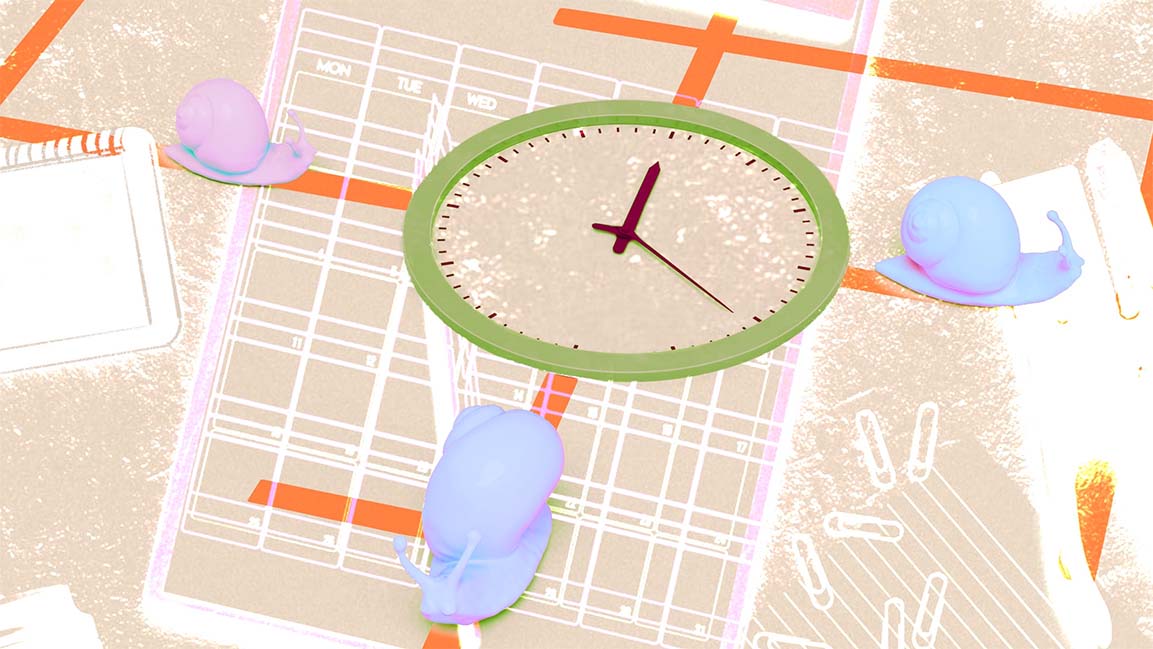- | 12:00 pm
Feeling burnout? Five ways to embrace slow work
Slow working revolves around working more mindfully and productively

A week ago, a Twitter employee shared a photo of their boss sleeping on the office floor after putting in overtime to meet the tight deadlines set by Elon Musk. This paints a real picture of most working professionals punching in over 12-hour shifts to work their way through a mounting pile of tasks, only to end up feeling burnout.
“Burnout is a complex phenomenon; each individual’s drivers for burnout vary greatly. They mainly include a high number of hours, poor workplace culture, a lack of mentorship and guidance, lack of agreement about scope, tasks, or role, and high workload,” says Dr. Robert Chandler, clinical psychologist and director of corporate and workplace services at LightHouse Arabia, a Dubai-based mental health and wellness clinic.
A possible solution? Slow working. “It is about working more mindfully, deliberately, and productively. It’s not just about reducing the number of working hours but also about how we spend those hours when we work. Think quality rather than quantity,” Chandler adds.
Humans adapt to crafting long-term strategic plans for accomplishing objectives. But we falter with planning when confronting hundreds of messages and a long task list. When there’s too much to complete, we short-circuit our functioning mechanisms, resulting in an anxious unease.
Working without distraction allows for greater creativity and connection to the task. Here are five ways to include the slow working concept in your work life.
NEVER COMPROMISE ON SLEEP
The research is conclusive, 7-8 hours of sleep dramatically mitigates the risks associated with chronic stress and subsequent burnout. The aim should be to stop working 3-4 hours before bedtime, hit the sheets at the same time every night, and avoid late finishes and all-nighters.
15 MINUTES OF REST FOR EVERY 75 MINUTES OF FOCUS
We are not wired to focus for over 80 minutes at a time. A 15-minute break to get up, move, and hydrate is required following periods of focus and stress. This break does not involve texting, emailing, or engaging with technology; instead, supplement it with grounding techniques or deep breathing.
DEVELOP HEALTHY BOUNDARIES
Setting appropriate boundaries at work is more challenging than ever, thanks to the ever-evolving technology, flexible work schedules, and remote workplaces. That said, a core facet of the slow working movement is not becoming overwhelmed with too many tasks. “I don’t have the capacity to take that task on”, and variations of this need to be a staple of one’s vocabulary. By establishing these boundaries early on, you can navigate your job, stay away from potentially toxic situations, and carve out a route that will allow you to accomplish your best work without being exploited or burnt out.
ONE SCREEN AT A TIME
If you are completing a task, do it with undivided attention. Get into the conscious habit of saying, “for the next 40 minutes, this is the sole focus of my attention”. Cast aside other gadgets, turn off all notifications, and close all other tabs. Finish your task well and with an intended purpose.
SHAPE THE COMPANY CULTURE
Strategies, personal commitments to slow working, good habits, and hacks are all important, but if the culture, values, and processes of the organization are not aligned, the individual will have a hard task at hand—advocate the slow working concept into the company culture.







































